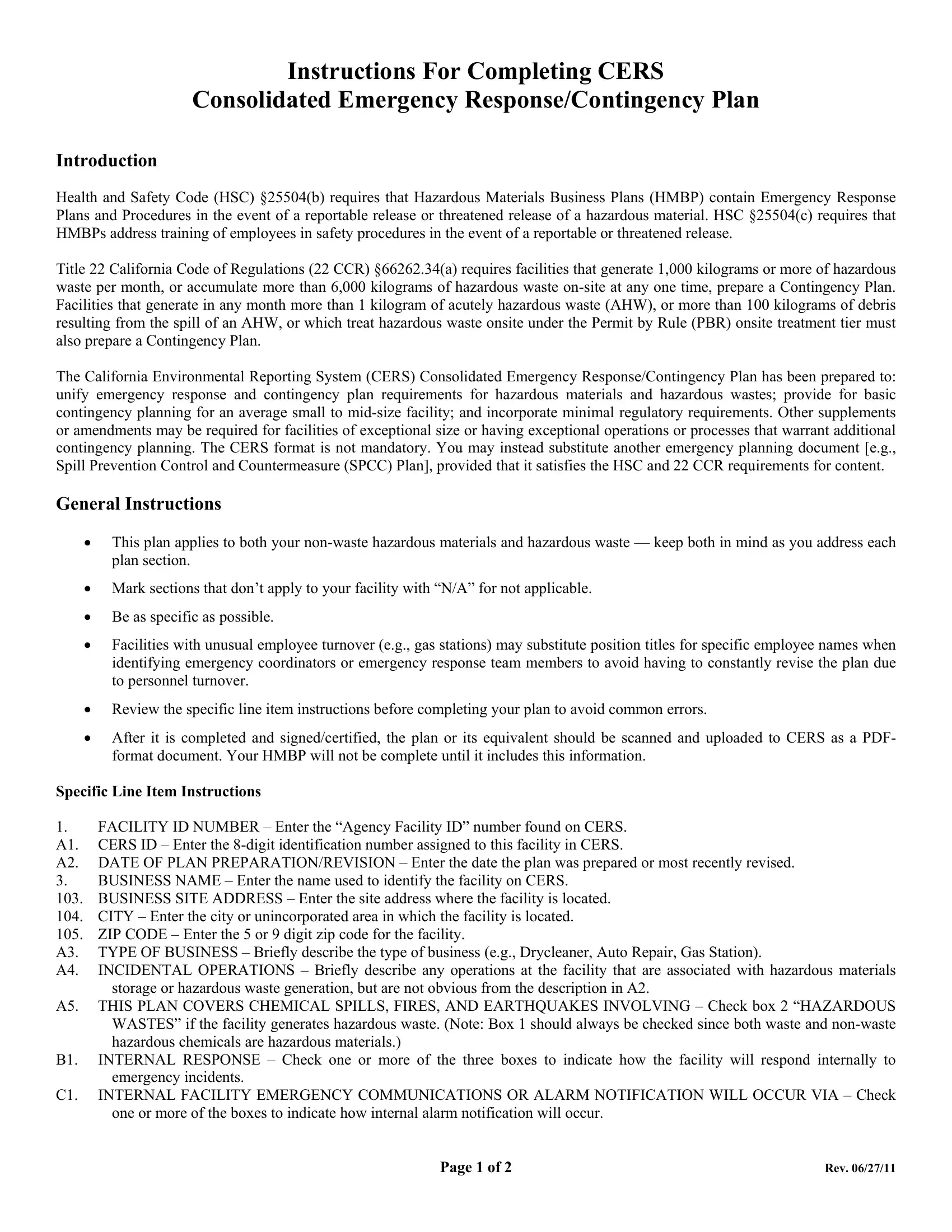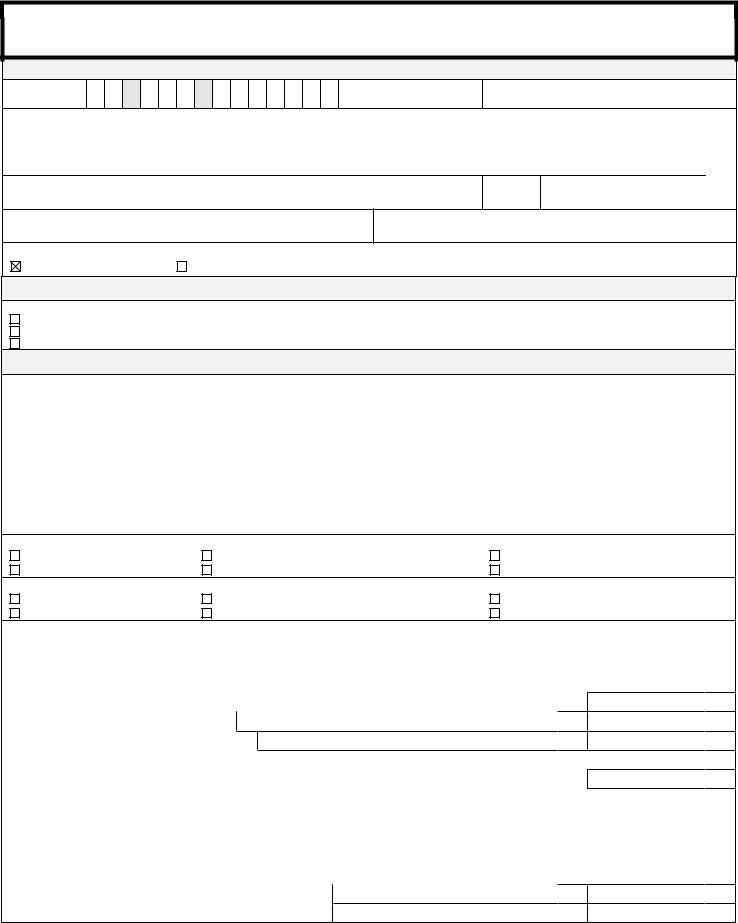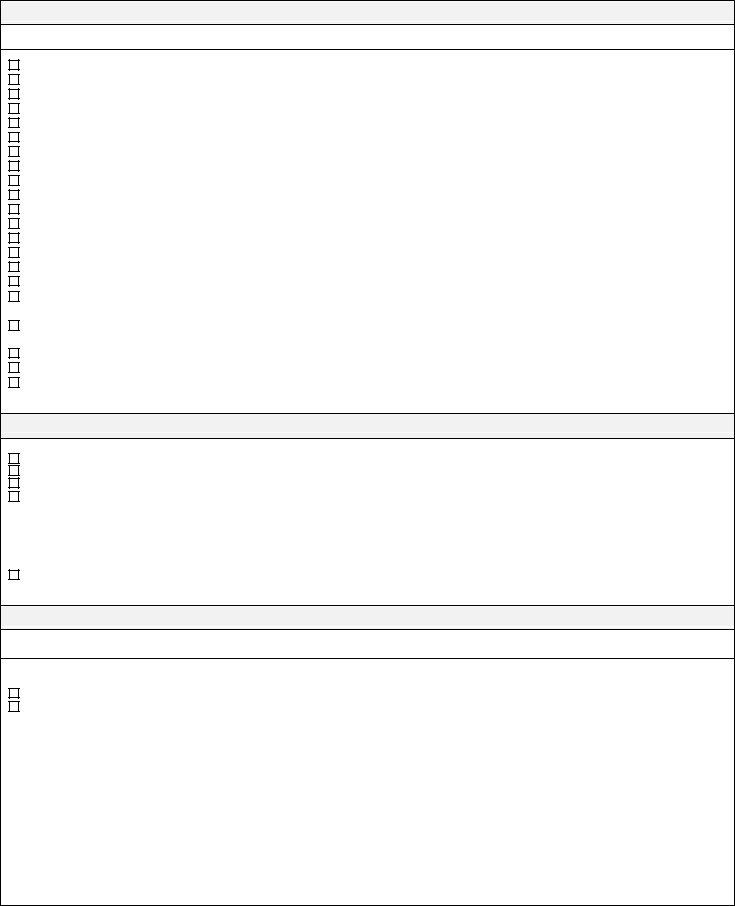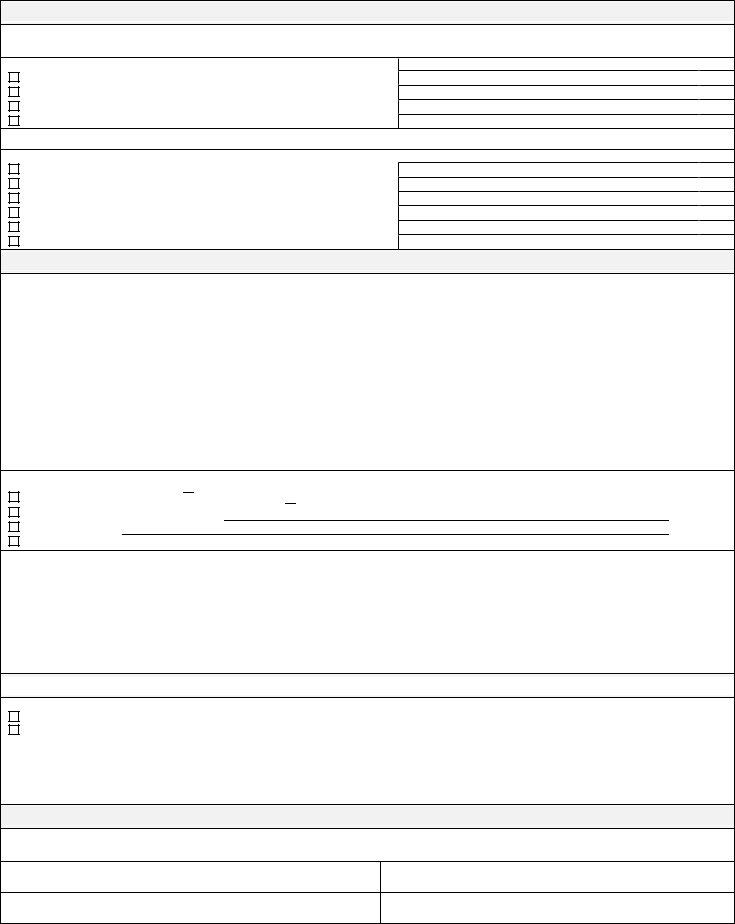You are able to work with consolidated emergency response plan instantly with our online editor for PDFs. Our editor is constantly developing to grant the very best user experience attainable, and that is due to our dedication to continual development and listening closely to user comments. Here's what you'll have to do to begin:
Step 1: Open the form in our tool by hitting the "Get Form Button" at the top of this page.
Step 2: This editor lets you modify almost all PDF documents in various ways. Transform it by adding customized text, correct existing content, and add a signature - all when it's needed!
This document will require specific information; to guarantee consistency, please consider the tips down below:
1. First, once completing the consolidated emergency response plan, begin with the page that features the following blank fields:
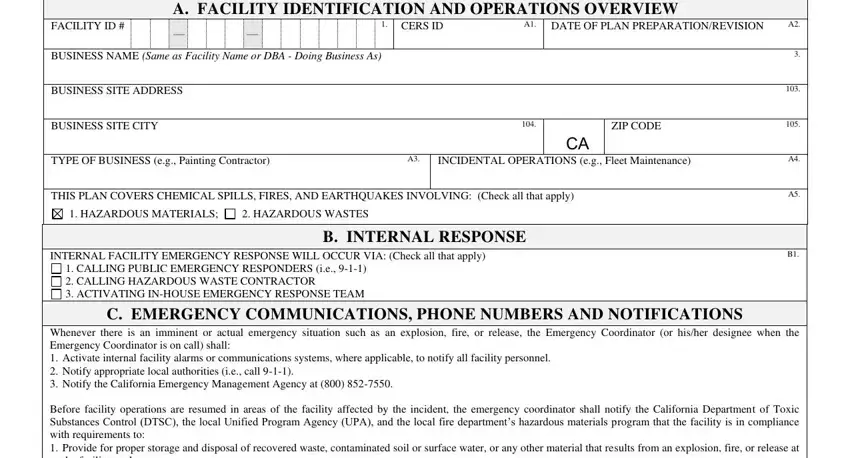
2. After this part is completed, it's time to add the needed specifics in cleanup procedures are completed, INTERNAL FACILITY EMERGENCY, VERBAL WARNINGS PAGERS, PUBLIC ADDRESS OR INTERCOM SYSTEM, TELEPHONE PORTABLE RADIO, NOTIFICATIONS TO NEIGHBORING, VERBAL WARNINGS PAGERS, EMERGENCY RESPONSE PHONE NUMBERS, PUBLIC ADDRESS OR INTERCOM SYSTEM, TELEPHONE PORTABLE RADIO, AMBULANCE FIRE POLICE AND CHP, NATIONAL RESPONSE CENTER NRC, POISON CONTROL CENTER, LOCAL UNIFIED PROGRAM AGENCY, and OTHER Specify so that you can move on to the 3rd step.
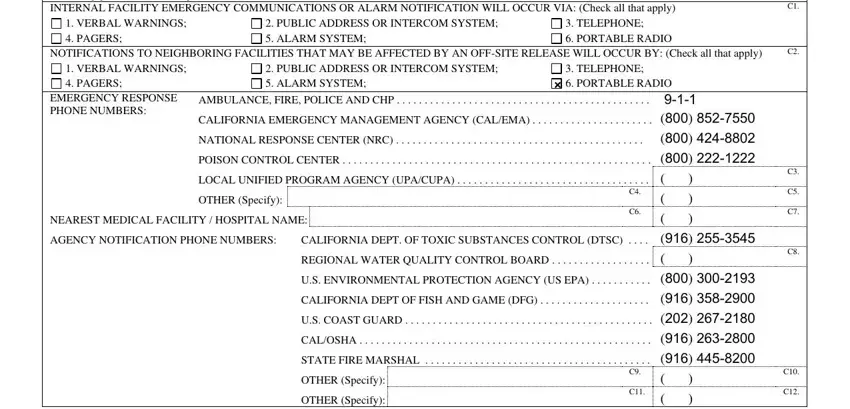
3. Completing SPILL PREVENTION CONTAINMENT AND, MONITOR FOR LEAKS RUPTURES, PROVIDE STRUCTURAL PHYSICAL, USE ABSORBENT MATERIAL FOR SPILLS, APPROPRIATE, SUCTION USING SHOP VACUUM WITH, APPROPRIATE, WASH DECONTAMINATE EQUIPMENT W, and E FACILITY EVACUATION is essential for the next step, make sure to fill them out in their entirety. Don't miss any details!
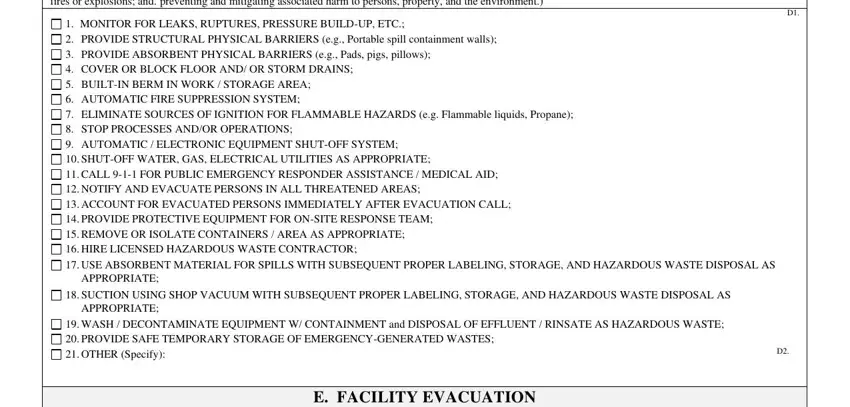
Many people generally get some things incorrect when filling in E FACILITY EVACUATION in this section. Don't forget to double-check what you type in right here.
4. To move ahead, your next step will require filling out a couple of blanks. These include THE FOLLOWING ALARM SIGNALS WILL, BELLS HORNSSIRENS VERBAL ie, THE FOLLOWING LOCATIONS ISARE, Note The Emergency Coordinator, EVACUATION ROUTE MAPS POSTED AS, Note The maps must show primary, F ARRANGEMENTS FOR EMERGENCY, Explanation of Requirement Advance, ADVANCE ARRANGEMENTS FOR LOCAL, and HAVE BEEN DETERMINED NOT, which you'll find essential to carrying on with this form.
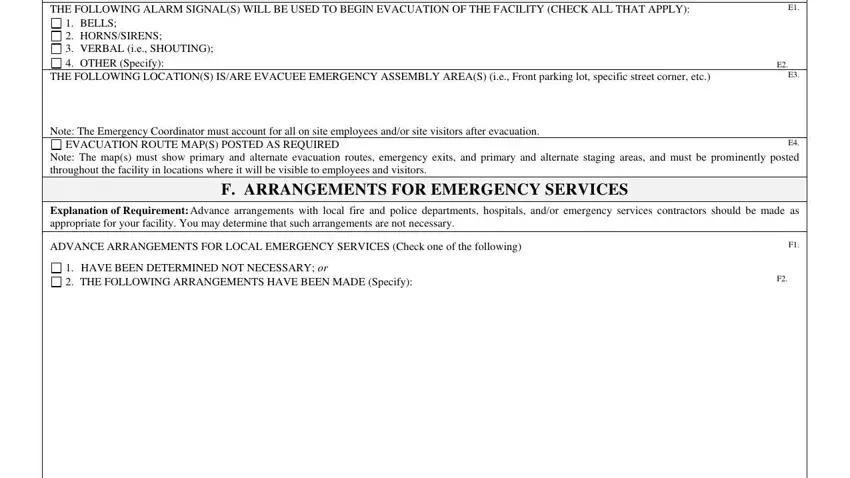
5. To finish your form, this last part features several additional blanks. Typing in Check all boxes that apply to list, CHEMICAL PROTECTIVE GLOVES Spill, EQUIPMENT AVAILABLE, LOCATION, CAPABILITY If applicable, CHEMICAL PROTECTIVE SUITS APRONS, OR VESTS, CHEMICAL PROTECTIVE GLOVES, CHEMICAL PROTECTIVE BOOTS, SAFETY GLASSES GOGGLES SHIELDS, HARD HATS, CARTRIDGE RESPIRATORS, SELFCONTAINED BREATHING APPARATUS, SCBA, and FIRST AID KITS STATIONS is going to wrap up everything and you'll be done in an instant!
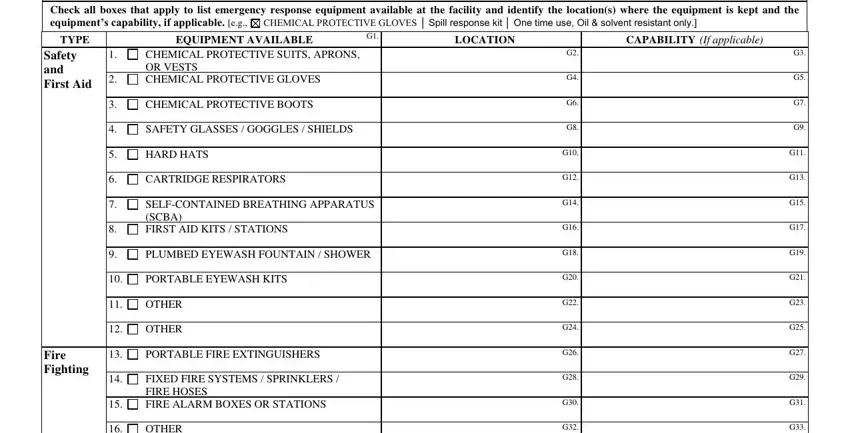
Step 3: Prior to submitting this file, make sure that blanks were filled out the correct way. The moment you confirm that it's correct, click on “Done." Right after setting up a7-day free trial account at FormsPal, it will be possible to download consolidated emergency response plan or send it through email directly. The file will also be easily accessible in your personal account with your every modification. FormsPal ensures your data privacy by having a secure method that never records or shares any kind of private data provided. Feel safe knowing your documents are kept protected each time you work with our services!
